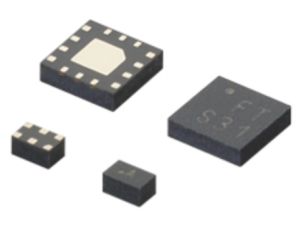
Switch Integrated Circuits ( ICs) are pivotal components in modern electronics, enabling precise control over electrical signals without mechanical parts. This guide explores their types, applications, key parameters, and future trends, providing a thorough understanding for engineers and enthusiasts alike.
Table of Contents
ToggleWhat Are Switch ICs?
Switch ICs are semiconductor devices that open or close electrical circuits electronically. Unlike mechanical switches, they use solid-state technology, offering faster operation, higher reliability, and longer lifespans. They are integral in managing signal routing, power distribution, and circuit protection across various industries.
Types of Switch ICs
1. By Signal Type
- Analog Switches: Transmit varying voltages (e.g., audio/video signals). Example: Analog Devices ADG1414.
- Digital Switches: Handle binary signals (on/off). Example: Texas Instruments TS5A23166.
2. By Configuration
- SPST (Single Pole Single Throw): Simplest form, single pathway.
- SPDT (Single Pole Double Throw): Single input, two outputs.
- Multiplexers/Demultiplexers: Route multiple signals through a single channel.
3. By Technology
- CMOS: Low power, high integration.
- MEMS: Micro-electromechanical systems for RF applications.
- GaN (Gallium Nitride): High-frequency, efficient power handling.
4. Power Management
- Load Switches: Control higher power circuits (e.g., Infineon’s PROFET™).
- Signal Switches: Manage low-power signals with minimal distortion.
Applications
- Consumer Electronics: Smartphones (managing audio, USB signals).
- Communications: 5G infrastructure, signal routing in base stations.
- Automotive: EV battery management, infotainment systems (AEC-Q100 certified).
- Industrial: Automation control systems, PLCs.
- Medical Devices: Portable monitors, ensuring safety with ISO certifications.
Key Parameters for Selection
- Voltage/Current Ratings: Must exceed circuit requirements.
- On-Resistance (Ron): Lower values reduce signal loss (critical for analog).
- Switching Speed: Nanosecond ranges for high-speed apps.
- Power Consumption: Crucial for battery-powered devices.
- Package Type: SMD for compactness; DIP for prototyping.
- Durability: Temperature range, ESD protection (e.g., ±8kV HBM).
Advantages vs. Disadvantages
- Pros:
- No moving parts → longer lifespan.
- Compact size, fast switching, low power.
- Suitable for harsh environments (vibration, moisture).
- Cons:
- Higher cost for advanced types (e.g., GaN).
- Limited high-power handling vs. electromechanical relays.
Recent Trends & Innovations
- Integration: Combine switches with microcontrollers for smart control.
- IoT Connectivity: Embedded diagnostics for predictive maintenance.
- Advanced Materials: GaN and SiC (Silicon Carbide) enhancing efficiency.
- MEMS Scaling: Miniaturized switches for RF and wearable tech.
Challenges
- Thermal Management: Dissipating heat in high-power apps.
- Signal Integrity: Maintaining fidelity at high frequencies.
- Cost vs. Performance: Balancing advanced features with affordability.
How to Choose the Right Switch IC
- Define Application Needs: Signal type, power levels, environment.
- Prioritize Parameters: Speed vs. power consumption, Ron vs. cost.
- Check Compliance: Industry standards (AEC-Q100, ISO).
- Prototype Testing: Validate performance in real-world conditions.
Future Outlook
As electronics evolve, Switch ICs will see increased integration with AI and IoT, enabling smarter systems. Advances in materials and packaging will drive miniaturization and efficiency, solidifying their role in emerging technologies like autonomous vehicles and 5G.
Conclusion
Switch ICs are the unsung heroes of modern electronics, offering reliability and versatility across countless applications. Understanding their types, parameters, and trends empowers engineers to design innovative solutions, paving the way for future technological breakthroughs.
This guide synthesizes technical details with practical insights, ensuring a comprehensive resource for anyone working with Switch ICs. By staying informed on advancements and challenges, professionals can leverage these components to their fullest potential.
- Everything You Need To Know About Limit Switch - May 21, 2025
- Everthing You Should Know About Rheostat - May 20, 2025
- Everything You Need To Know About Reversing Contactor - May 19, 2025






